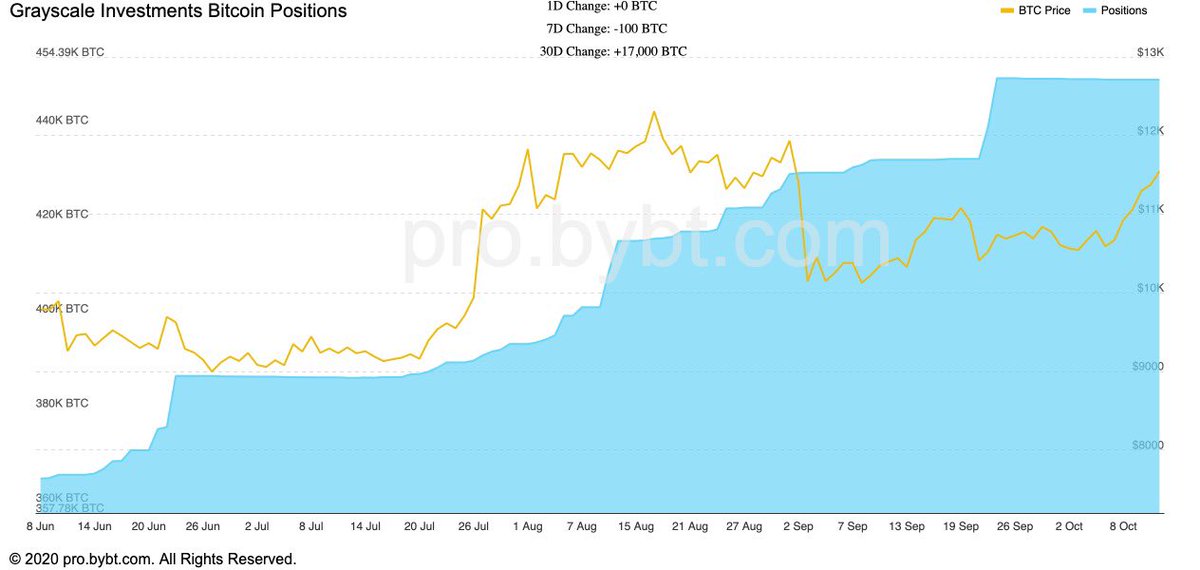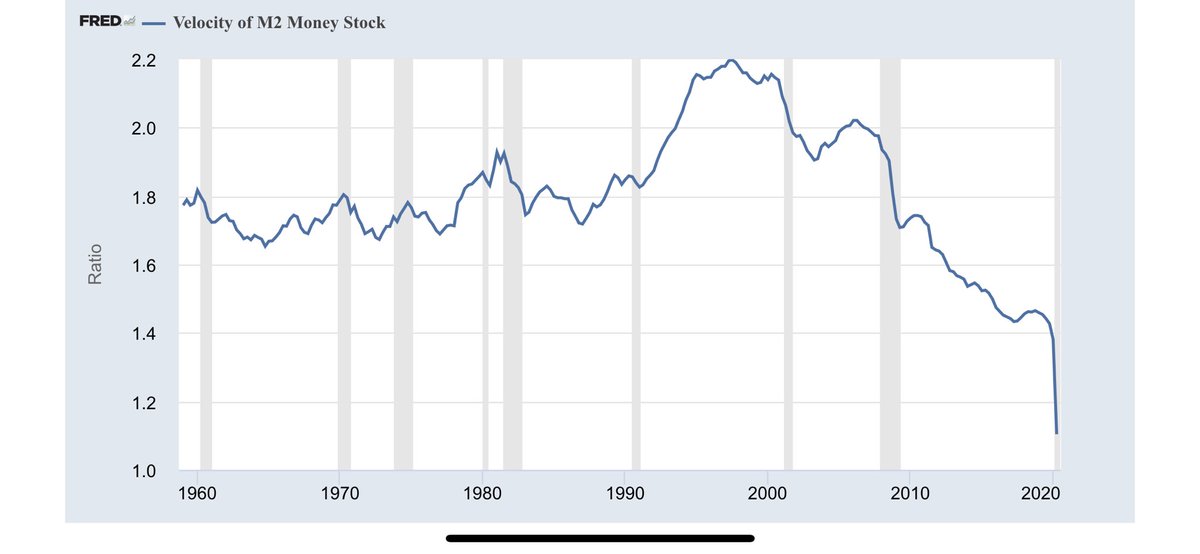
Why We’re on the Precipice of Another Bitcoin Mania...
A thread.
Note: it has nothing to do with Bitcoin replacing fiat money anytime soon.
A thread.
Note: it has nothing to do with Bitcoin replacing fiat money anytime soon.
1- We can quibble all day about whether BTC is “the future of money”.
Briefly, I think not, since I fundamentally believe that any money must have “non-monetary use value” in the free market before it becomes money. (Yes, this would disqualify govt-issued paper money too.)
Briefly, I think not, since I fundamentally believe that any money must have “non-monetary use value” in the free market before it becomes money. (Yes, this would disqualify govt-issued paper money too.)
2- But I digress, as debating Bitcoin’s status as “money” is not the aim of this thread.
Rather, the aim here is to persuade you that *institutional buying* of Bitcoin will likely propel the third big Mania at some time in the not-so-distant future.
Rather, the aim here is to persuade you that *institutional buying* of Bitcoin will likely propel the third big Mania at some time in the not-so-distant future.
3- In the first Bitcoin Mania, overzealous retail buying drove the price from ~$1,000 in early ‘17 to its ultimate peak of ~$20,000 in late 2017.
The second Bitcoin Mania, also fuelled by retail, drove the price from ~$3,500 in early ‘19 to a high of almost $14,000 in June ‘19.
The second Bitcoin Mania, also fuelled by retail, drove the price from ~$3,500 in early ‘19 to a high of almost $14,000 in June ‘19.
4- These meteoric rises in Bitcoin (20x in < 1yr in 2017 and 4x in < 6mos in 2019) will not be the last in Bitcoin’s history...
An even bigger Mania is coming, and this time the fuel for the fire will come from institutions cornering the already-tiny free float.
HT @hkuppy
An even bigger Mania is coming, and this time the fuel for the fire will come from institutions cornering the already-tiny free float.
HT @hkuppy
https://twitter.com/hkuppy/status/1314192122548047872
5- Let’s run through some of the telltale signs that another Mania is on the horizon...
More than 10 public entities have invested in Bitcoin this year, led of course by $GBTC. Other notable entities are $MSTR and $SQ.
More big players will surely follow suit in due time.
More than 10 public entities have invested in Bitcoin this year, led of course by $GBTC. Other notable entities are $MSTR and $SQ.
More big players will surely follow suit in due time.
https://twitter.com/Coin98Analytics/status/1315853890424717312
6- These institutional buyers are chomping away at the free float which was relatively small to begin with.
At the same time, the buying from institutions seems to be dwarfing the number of Bitcoins being mined.
See below from @kerooke (7/29-8/12).
At the same time, the buying from institutions seems to be dwarfing the number of Bitcoins being mined.
See below from @kerooke (7/29-8/12).
https://twitter.com/kerooke/status/1293652076271214601

7- Another great chart from @kerooke shows eye-popping Q/Q growth in $SQ revenue from Bitcoin.
Note also that the percentage of $SQ revenues that come from Bitcoin transactions is skyrocketing.
Note also that the percentage of $SQ revenues that come from Bitcoin transactions is skyrocketing.
https://twitter.com/kerooke/status/1290796717848354818

8- As for $GBTC, this thing brings it all together. For one, it makes Bitcoin a lot more accessible to institutions, as it allows them to buy and sell Bitcoin as they would any stock.
Also, $GBTC shares outstanding are growing like mad. These guys are just devouring the float:
Also, $GBTC shares outstanding are growing like mad. These guys are just devouring the float:

9- As of 9/27, $GBTC held ~450,000 BTC, meaning that “GBTC’s purse represents 2.43% out of the BTC currently in circulation”...
Link: news.bitcoin.com/grayscale-inve…
Link: news.bitcoin.com/grayscale-inve…
10- And their buying continues at remarkable rates...
In the week prior to 9/27, $GBTC bought more than 17,000 Bitcoin, which is almost US$200,000,000 at today’s prices.
There’s no indication that this aggressive buying has since slowed...
In the week prior to 9/27, $GBTC bought more than 17,000 Bitcoin, which is almost US$200,000,000 at today’s prices.
There’s no indication that this aggressive buying has since slowed...
https://twitter.com/bybt_com/status/1310049629052911618
11- Now we get to the kicker. Just this week, Fidelity came out out with a “Bitcoin Investment Thesis”.
You guessed it: they’re recommending a 5% allocation to Bitcoin... I reckon they pump this as hard as they can and earn as much in fees as possible.
nasdaq.com/articles/fidel…
You guessed it: they’re recommending a 5% allocation to Bitcoin... I reckon they pump this as hard as they can and earn as much in fees as possible.
nasdaq.com/articles/fidel…
11A- You can find the full Fidelity presentation here:
Link: fidelitydigitalassets.com/bin-public/060…
Link: fidelitydigitalassets.com/bin-public/060…
12- In sum:
A) Float is being gobbled up and a significant portion has already been lost.
B) 10 public companies invested in Bitcoin this year. More to follow.
C) Fidelity is about to pump the “Bitcoin Investment Thesis”.
Or for a more succinct summary from @APompliano:
A) Float is being gobbled up and a significant portion has already been lost.
B) 10 public companies invested in Bitcoin this year. More to follow.
C) Fidelity is about to pump the “Bitcoin Investment Thesis”.
Or for a more succinct summary from @APompliano:
https://twitter.com/APompliano/status/1316024047935713285
13- These factors set the stage for demand to dwarf supply and corner the market.
The missing ingredient to another Bitcoin Mania (which will likely be the biggest of them all) has always been institutional money.
Well, it looks like we’re getting close...
The missing ingredient to another Bitcoin Mania (which will likely be the biggest of them all) has always been institutional money.
Well, it looks like we’re getting close...
Full disclosure: I‘m not the originator of this thesis (in fact I have very few original ideas😅). I credit @hkuppy for bringing it to my attention.
@APompliano @novogratz @ncousyn @capitalistexp @JasonMutiny @PeterSchiff @SpencerKSchiff @coloradotravis
Feel free to Tag others!
@APompliano @novogratz @ncousyn @capitalistexp @JasonMutiny @PeterSchiff @SpencerKSchiff @coloradotravis
Feel free to Tag others!
11A- Correction: the original article headline from Nasdaq said that Fidelity was recommending a 5% allocation. Turns out this headline was incorrect.
I did not mean to mislead anyone. My apologies if I did.
I did not mean to mislead anyone. My apologies if I did.
• • •
Missing some Tweet in this thread? You can try to
force a refresh





